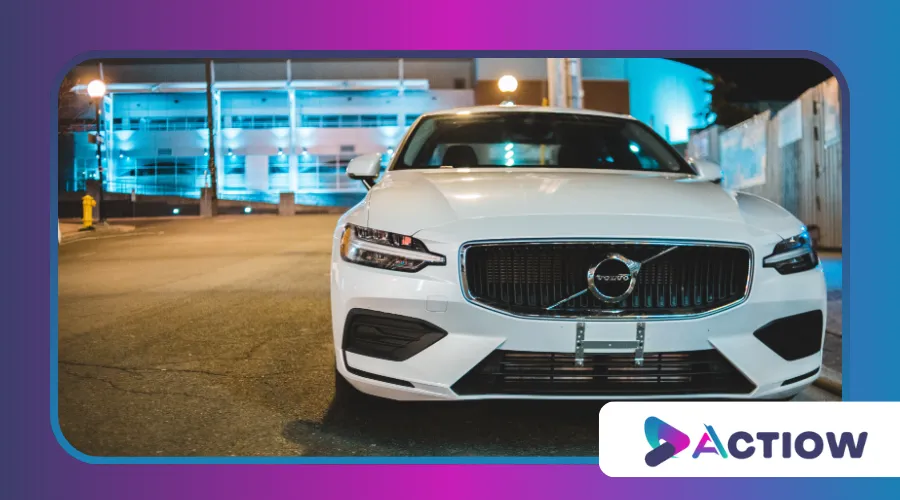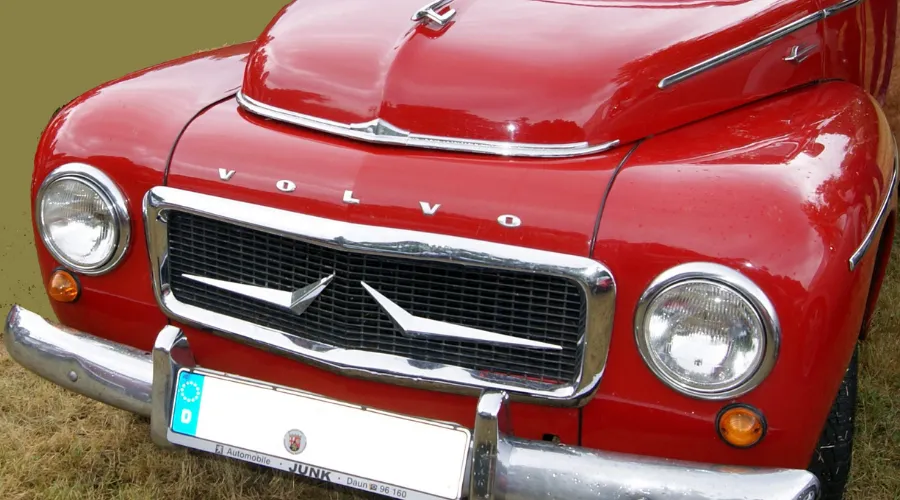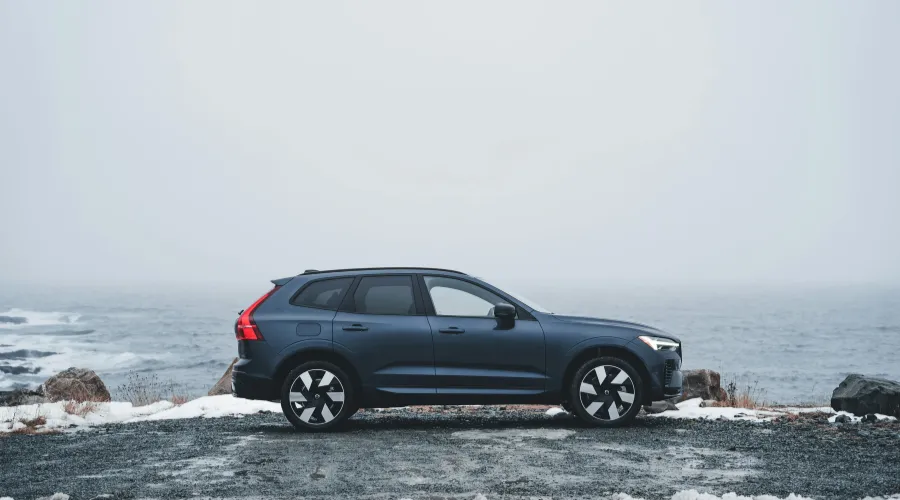The History of Volvo: Safety and Innovation Since 1927

Anúncios
The history of Volvo is a testament to relentless innovation, pioneering safety, and Scandinavian design philosophy.
Founded in 1927 in Gothenburg, Sweden, Volvo didn’t just build cars—it redefined what driving should be: secure, sustainable, and sophisticated.
From the iconic PV444 to the modern electric XC40 Recharge, Volvo’s journey blends engineering brilliance with a human-centric approach.
Anúncios
But what truly sets this brand apart?
How did a small Swedish manufacturer become a global symbol of automotive safety?
Let’s explore the milestones that shaped the history of Volvo and why it remains a benchmark in the industry.
Volvo’s commitment to safety and innovation has not only influenced the automotive industry but has also made a significant impact on global safety standards.
By consistently prioritizing the well-being of drivers and passengers, Volvo has cultivated a reputation that resonates with consumers worldwide.
The brand’s focus on user-friendly technology and intuitive design has also contributed to its strong market presence, appealing to a diverse customer base.
As a result, Volvo has built a loyal following, with many customers choosing the brand for its commitment to quality and safety over decades.
1927–1944: The Birth of a Swedish Icon
Volvo’s story began on April 14, 1927, when the first production car, the ÖV4 (nicknamed “Jakob”), rolled out of the factory.
A collaboration between Assar Gabrielsson and Gustaf Larson, the company’s mission was clear: “Cars are driven by people. The guiding principle behind everything we make at Volvo, therefore, is—and must remain—safety.”
The early years were tough.
The ÖV4, with its wooden frame and shaky start, wasn’t an instant success.
Yet, by the 1930s, Volvo had refined its approach, introducing sturdier models like the PV651, a hit among taxi companies for its durability.
This period also saw the establishment of Volvo’s manufacturing processes, which emphasized quality and reliability.
As the company grew, it began to focus on expanding its market reach, aiming to establish itself as a reputable player not just in Sweden, but internationally.
Volvo’s innovative spirit during these formative years paved the way for its future successes, laying the groundwork for a brand that would prioritize safety and comfort.
The company’s early dedication to engineering excellence attracted a dedicated workforce, fostering a culture of pride and craftsmanship that continues to define Volvo today.
+ Collector Cars: How to Identify and Value Classic Models
Key Innovations (1927–1944)
| Year | Model | Significance |
|---|---|---|
| 1927 | ÖV4 | Volvo’s first production car |
| 1935 | PV36 | Introduced aerodynamic design |
| 1944 | PV444 | Post-war success, first unibody construction |
1950s–1970s: The Safety Revolution
If one word defines the history of Volvo, it’s safety.
In 1959, engineer Nils Bohlin invented the three-point seatbelt, a breakthrough that saved millions of lives.
Unlike competitors, Volvo made the patent open, prioritizing public safety over profit.
The 1960s and ’70s saw Volvo cement its reputation with models like the Amazon (120 Series) and the 140 Series, both lauded for their crash-resistant designs.
By 1972, Volvo had introduced the rear-facing child seat, another industry-first.
This commitment to safety innovations continued to influence not only Volvo’s designs but also the broader automotive industry, prompting other manufacturers to adopt similar safety features.
Volvo’s dedication to research and development during this era laid the groundwork for future advancements in automotive safety technology.
In addition to seatbelts and child seats, Volvo also focused on improving vehicle structure and materials, ensuring that their cars could withstand significant impacts.
This holistic approach to safety not only helped save lives but also established Volvo as a trusted brand among consumers who valued security in their vehicles.
Did You Know?
A 2021 study by the NHTSA found that seatbelts reduce fatal injuries by 45%—proof of Volvo’s lasting impact.
This statistic highlights the importance of Volvo’s innovations and their ongoing relevance in saving lives on the road.

1980s–2000s: Global Expansion and Environmental Focus
Volvo wasn’t just about safety—it also led in sustainability.
The 1982 240 Diesel became one of the first cars to meet U.S. emission standards, while the 1991 850 redefined performance with a transverse five-cylinder engine.
The brand’s acquisition by Ford in 1999 stirred debates, but Volvo retained its identity.
By 2010, under Geely’s ownership, it doubled down on electrification, setting a bold goal: 50% electric sales by 2025.
This shift not only showcased Volvo’s commitment to sustainability but also aligned with growing consumer demand for environmentally friendly vehicles.
During this time, Volvo also invested heavily in developing cleaner technologies and improving fuel efficiency across its entire lineup.
These efforts positioned Volvo as a leader in the automotive industry’s transition toward greener alternatives.
The introduction of hybrid models during this period further demonstrated Volvo’s commitment to reducing its carbon footprint while maintaining performance and safety.
Additionally, Volvo’s engagement in global environmental initiatives highlighted its dedication to corporate social responsibility, resonating with eco-conscious consumers.
++ The History of the Beetle: How the Car Became a Global Phenomenon
2010–Present: Electrification and Autonomous Driving
Modern Volvo is a tech powerhouse.
The XC90 (2015) debuted with semi-autonomous features, while the XC40 Recharge (2020) marked its full-electric entry.
Volvo’s “Vision 2030” plan aims for a 100% electric lineup, proving innovation never stops.
This ambitious goal reflects the company’s understanding of the automotive landscape’s rapid evolution and the increasing importance of sustainability.
Volvo’s investments in research and development have enabled it to stay ahead of competitors in the race toward electrification.
Moreover, the integration of advanced technologies such as AI and machine learning into their vehicles enhances the overall driving experience and safety.
The development of autonomous driving technologies is another testament to Volvo’s forward-thinking approach, positioning the brand as a leader in the autonomous vehicle market.
As urban mobility evolves, Volvo is also exploring partnerships with tech companies to enhance connectivity and smart features in their vehicles.

Volvo’s Electric Timeline
| Year | Model | Milestone |
|---|---|---|
| 2019 | XC40 T5 | First plug-in hybrid SUV |
| 2020 | XC40 Recharge | First full-electric Volvo |
| 2022 | C40 Recharge | Sleek electric coupe-SUV |
For more insights into Volvo’s innovations and sustainability efforts, visit Volvo Cars.
Conclusion: Why Volvo’s Legacy Endures
The history of Volvo isn’t just about cars—it’s about people.
From seatbelts to EVs, Volvo’s DNA blends safety, sustainability, and Scandinavian minimalism.
As the brand charges into an electric future, one thing remains certain: Volvo will keep redefining mobility, just as it has since 1927.
What’s next?
With AI-driven safety systems and carbon-neutral factories, Volvo’s next chapter might be its most exciting yet.
The company’s commitment to innovation and safety will likely continue to inspire future generations of automotive engineers and designers.
As Volvo embraces new technologies and sustainable practices, it will play a crucial role in shaping the future of transportation.
The journey of Volvo reflects a broader trend in the automotive industry, where safety and environmental consciousness are becoming paramount.
With each new model, Volvo not only honors its legacy but also sets a new standard for what consumers can expect from their vehicles in terms of safety, performance, and sustainability.
